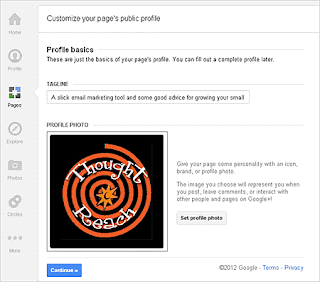 |
| Pizza box math humor |
Search engines love LinkedIn, just not necessarily YOUR page - 5 steps to build your small business using LinkedIn
If you run a pizza joint that gets most of it's business from passers-by on the corner of 8th & University Place in Greenwich Village, NY (no, there's not really one there, I already checked so stop looking), then your business might not need LinkedIn. But the rest of us, that are made or broken by the connections we make with business people, do need it. Many business people have a presence on LinkedIn but they aren't really maximizing it. There are several hidden things that will make your time spent on this great social network well worth your time.
1- Link to your website using keywords, not the pesky "Company Website" text that LinkedIn wants to force on you
 |
| See the difference in the 2 links? One has keywords, one does not |
To help boost your search engine attractiveness / searchability / affinity / magnetic-ness and all around awesome-oscity, you need to use keywords for the text of the link that points back to your website. How do you do that? See below. This is a simple way to get LinkedIn to let you use whatever text you want for your website link instead of the old stand-by of "Company website" that they default for you. Just select "Other" on the field type dropdown.
 |
| Choose "Other" from the Website dropdown to expose a text field |
2- Search engines love LinkedIn, but not your page because you don't use keywords in the right places
To get found, you need to make sure that you've not only got the right keywords on your LinkedIn profile, but you've got them in the right places. Search engines love to see keywords in important places. Heading tags on a webpage that have keywords in them are given more weight by the search engine than those same keywords in the body of the text of the page.
Add keywords in your job title
Yeah, yeah, I know, you have an official job title and you're afraid your boss will see that you've unofficially granted yourself another one. But really, I don't think she'll care. In the job title field, go ahead and title yourself with something slightly more keyword-awesome than "Sr. Director, Finance at Initech." How about "Sr. Director, Offshore Financing and Finance Development Consultant Lead at Initech." With a title like that, you're far more likely to get found by Google searches or LinkedIn searches.
Add keywords to your heading field.
Same drill. Use some different keywords here. Just keep in mind that you don't have to regurgitate your job title onto the heading field.
3- You have a personal profile page, but you need a business page
I don't mean to say "duh" here, but.... duh. Actually, if you're new to LinkedIn it's nothing to be ashamed of. But, go through the process of creating a business page for your company.
4- Showcase your company with video
If your company has a short video, add it to your LinkedIn company business page. How? Well one way is to use the SlideShare app on LinkedIn.
- Create your video
- Embed your video into a Powerpoint slide
- Using the SlideShare app on LinkedIn, upload your ppt to your profile page.
- If you don't want the video to start playing immediately, then have the first slide of your ppt be just a intro slide with text that instructs viewers to click Play.
 |
| In PowerPoint, here's where to embed a video into a .ppt file |
5- Post, and post again. Use LinkedIn like a social network like Facebook
In the same manner you'll post updates to your Facebook page, post updates to both your LinkedIn company page and personal page. Just don't spam. Your friends and business followers don't want to hear about Farmville. A lot of companies just create a business page and then leave it alone. No! It's for you to tell the world what you are up to, why you do what you do, and finally explain why your haircut looks like Rod Blagojevich.
And, when posting to LinkedIn, keep in mind that people don't want to see the exact same post you just put on Twitter with all the little Twitter hashtags and @ symbols and hoo-ha. Instead, write in a short, business-like tone, use images, and point to your article/blog. The text of your post would look something like a type-written version of what your mother used to say to you when you were little and got in trouble. You know, short, to the point, and with just a touch of color.
Have any other great LinkedIn ideas? Post them in the comments below.
Read next: Be glad Twitter broke up with LinkedIn
Image credit: Flickr under Creative Commons
Read next: Be glad Twitter broke up with LinkedIn
Image credit: Flickr under Creative Commons













